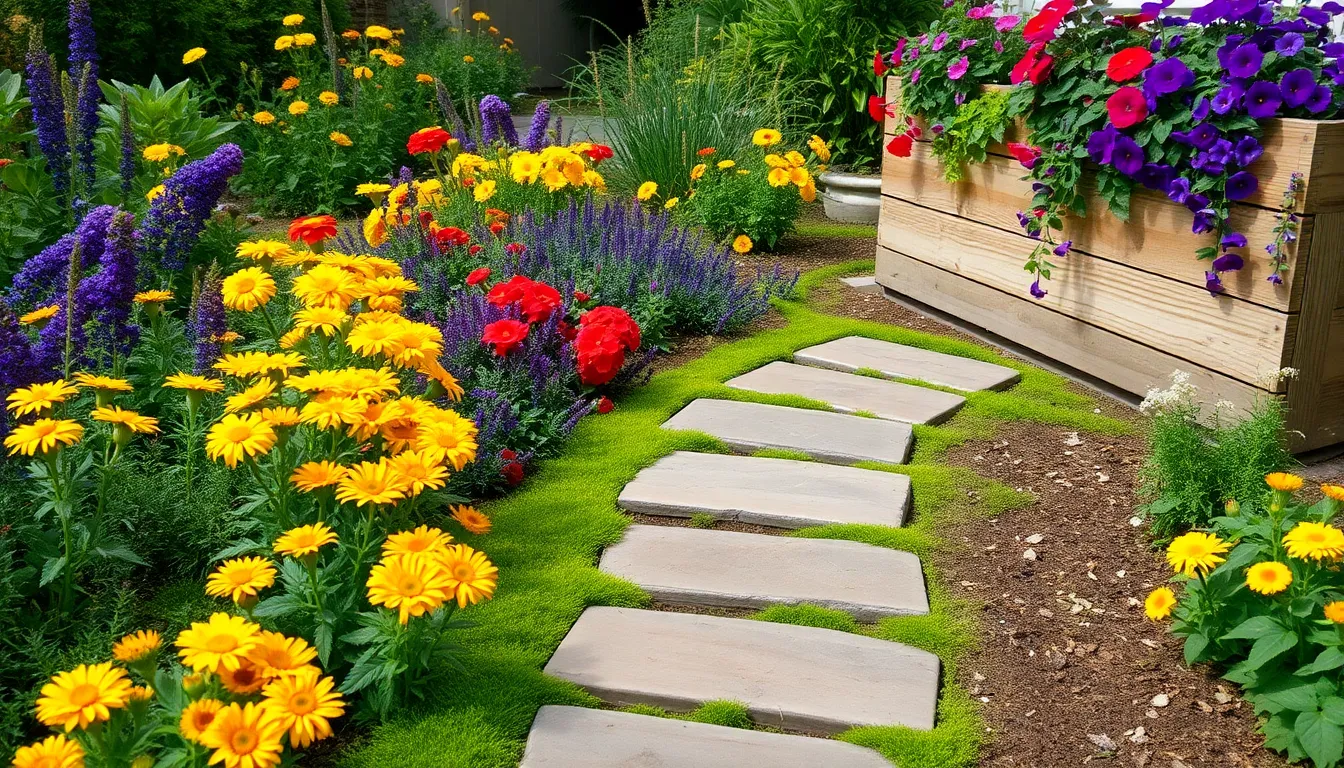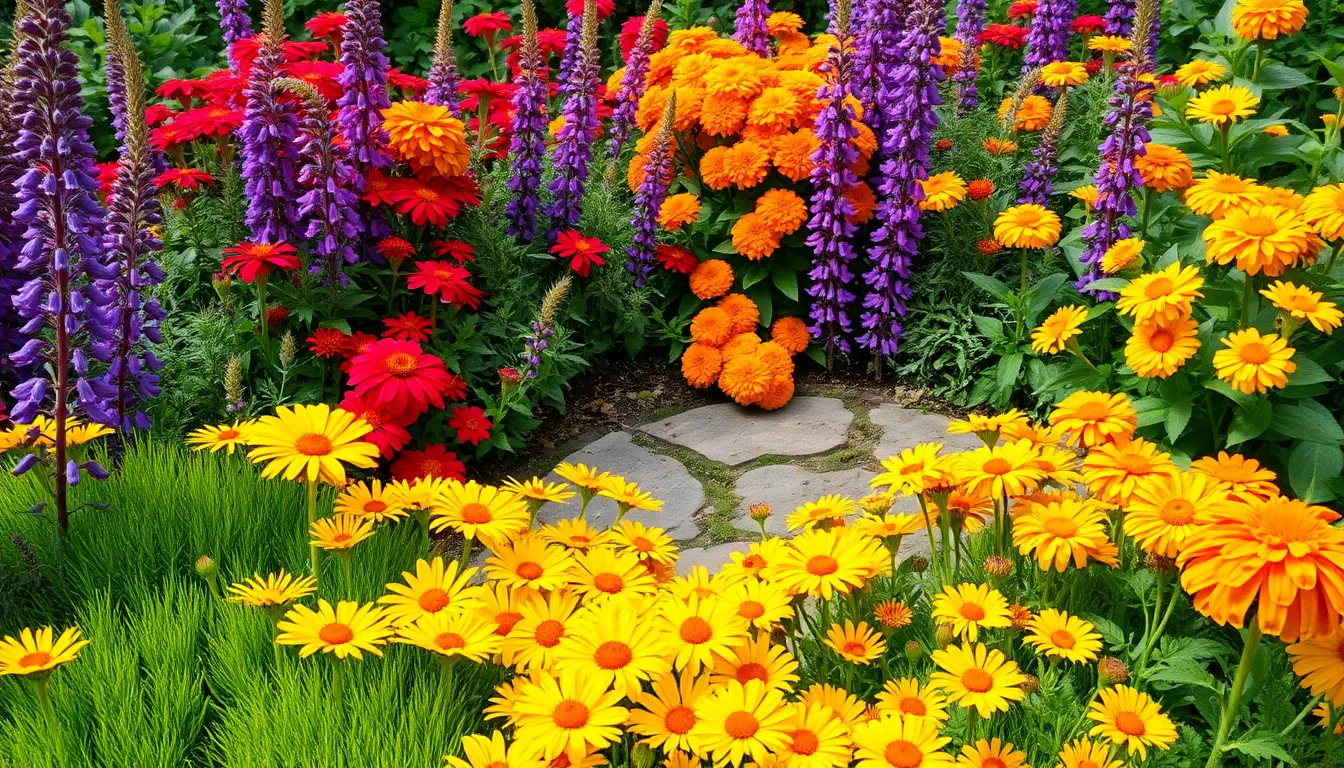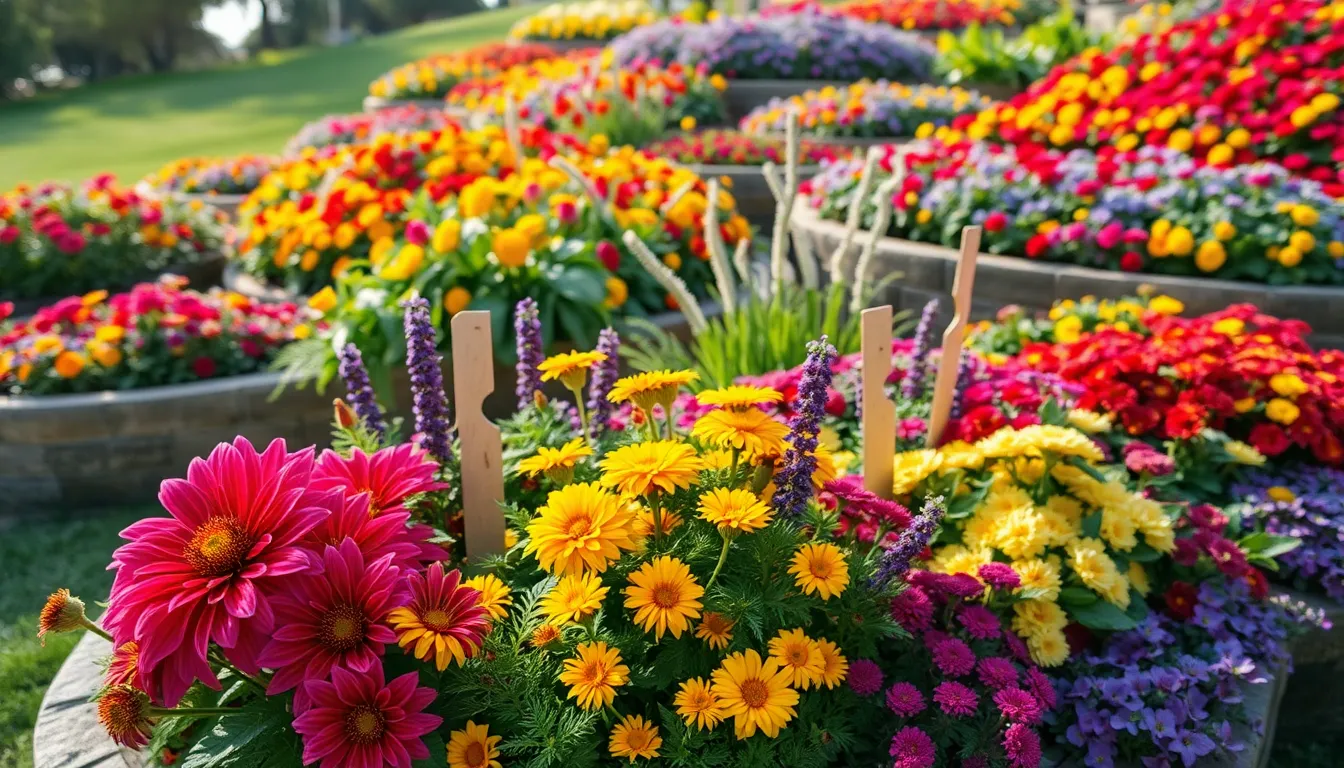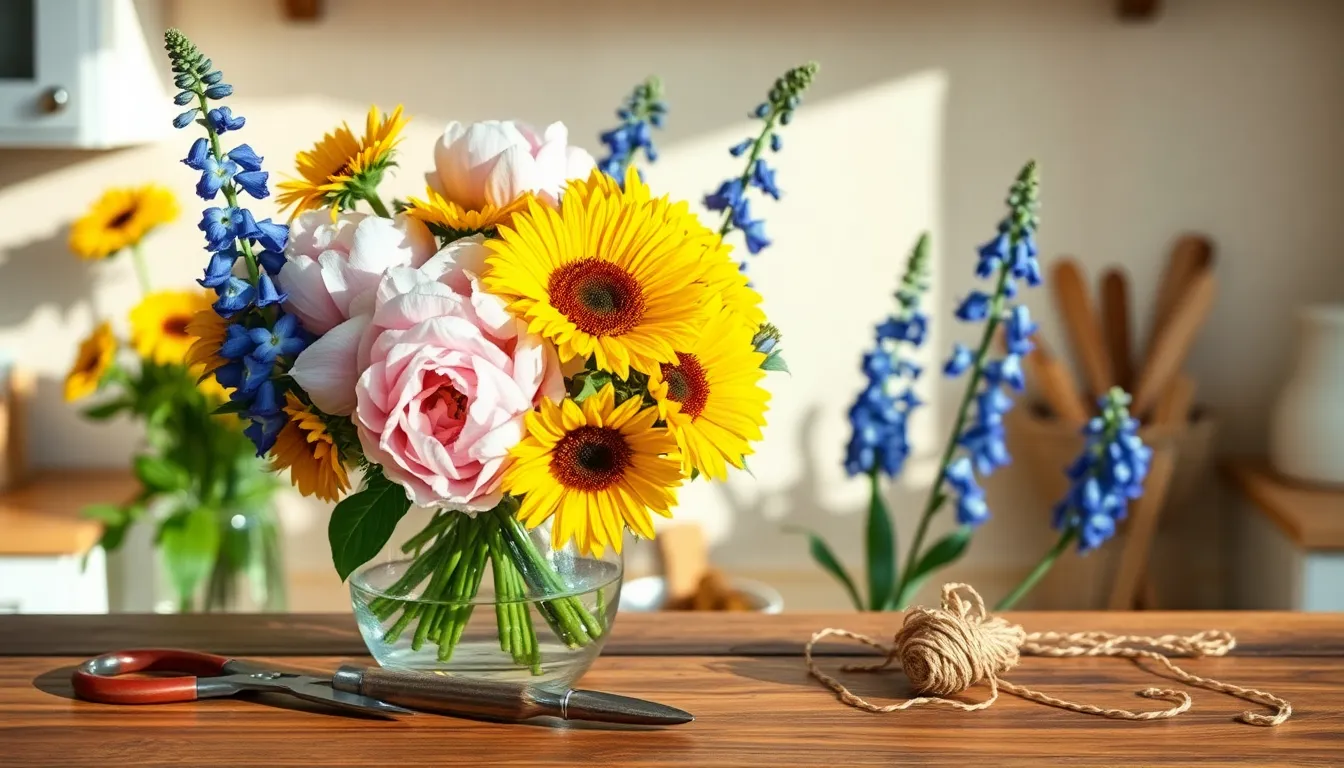Imagine stepping into your own vibrant oasis, where every bloom whispers stories of nature’s elegance and your personal touch. “Easy Flower Garden Design Ideas” is here to transform that dream into reality, whether you’re planting your very first seeds or refining an established garden. With this guide, you’ll find a treasure trove of inspirations that cater to gardeners of all skill levels, each idea handpicked to elevate your garden’s charm and functionality.
For those just beginning their gardening journey, or seasoned growers looking to refresh their landscape, these design ideas serve as a bridge between creativity and practicality. You’ll discover how to effortlessly balance color, texture, and structure in your garden, unlocking the full potential of your outdoor space. As you explore these pages, prepare to embrace the simple joys and bountiful rewards that come with nurturing your own floral paradise, confident in your ability to cultivate beauty and serenity right at your doorstep.
Choose Low-Maintenance Flower Varieties
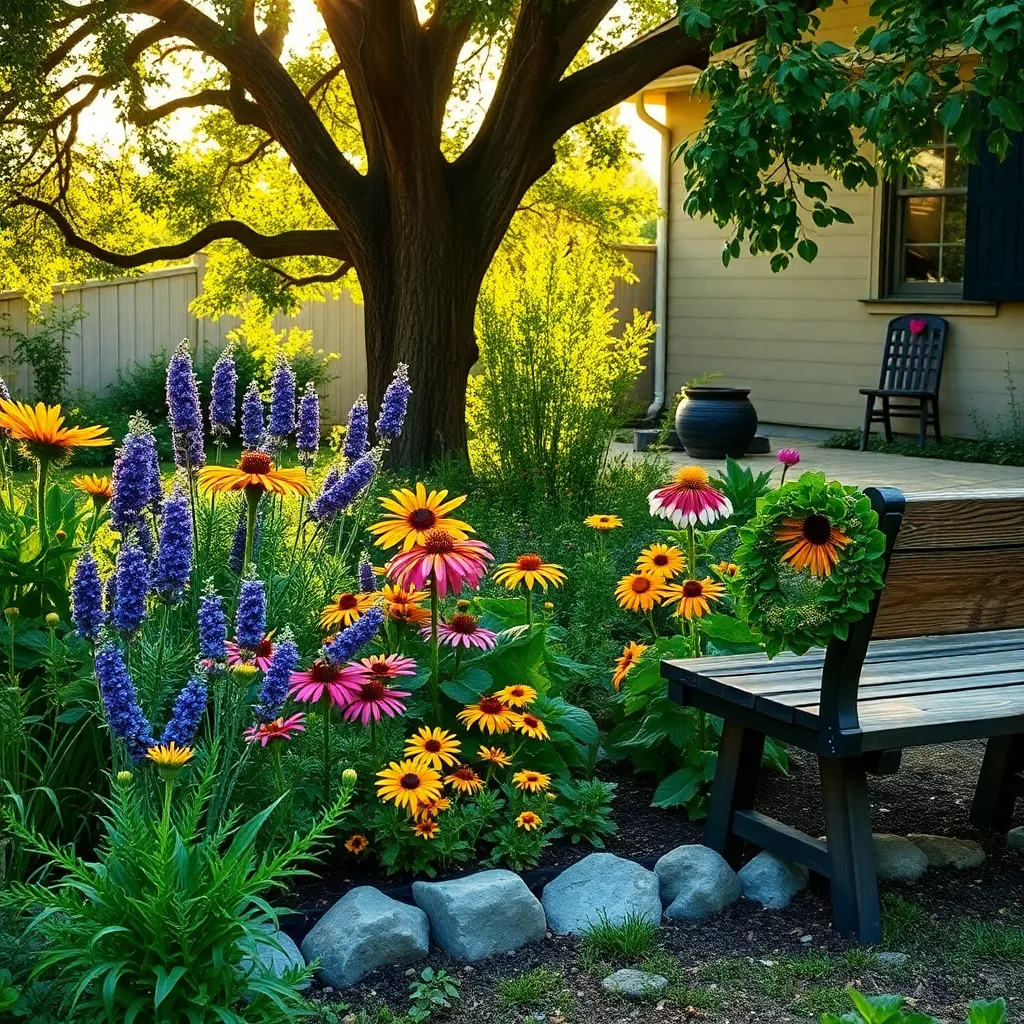
Choosing low-maintenance flower varieties can significantly simplify your gardening routine while still offering vibrant blooms. Consider selecting perennials like daylilies and black-eyed Susans, which are known for their resilience and ability to thrive with minimal care.
Daylilies are particularly hardy, thriving in a range of soil types from sandy to clay, as long as they have good drainage. For best results, plant them in a sunny spot and water them deeply once a week, allowing the soil to dry out between waterings.
Alternatively, black-eyed Susans are drought-tolerant and can flourish in poor soil conditions. These flowers prefer full sun and will bloom prolifically with just occasional watering, making them ideal for gardeners seeking vibrant color with little hassle.
For beginners, starting with these robust varieties means less worry about constant care and more enjoyment of your garden. Advanced gardeners can experiment with companion planting by pairing these flowers with other drought-resistant varieties, creating a self-sustaining mini ecosystem.
Consider adding lavender to your low-maintenance garden for its aroma and pest-repelling properties. Lavender thrives in well-drained soil and requires full sunlight, making it an excellent choice for sunny borders or rock gardens.
Water lavender sparingly, as it prefers dry conditions; overwatering can lead to root rot. Prune the plants annually in the spring to encourage bushier growth and more abundant flowers, enhancing both the plant’s longevity and its visual appeal.
Group by Color and Height
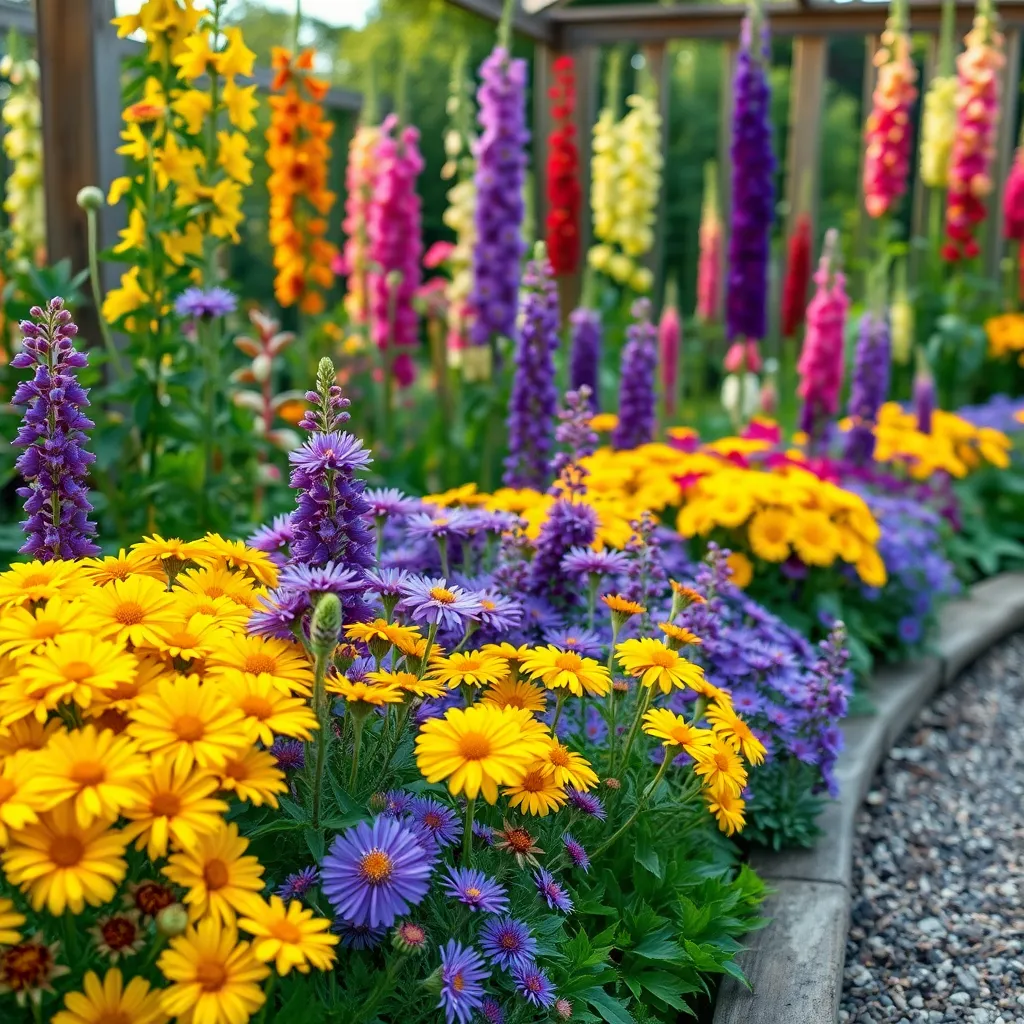
Grouping flowers by color and height can create a stunning visual impact while maintaining a sense of order in your garden. Start by selecting a color palette that reflects your personal style—whether it’s bold and vibrant or soft and pastel, consistency in color can unify your garden space.
When considering height, arrange plants so taller varieties are placed at the back of the bed, allowing shorter flowers to be seen from all angles. This not only enhances visibility but also ensures that each plant receives adequate sunlight, a crucial factor for healthy blooming.
For beginners, try starting with easy-to-maintain flowers like marigolds and zinnias, which can thrive in a variety of soil types and don’t require frequent watering. These flowers provide bursts of color and can serve as a perfect backdrop or accent in any garden design.
Advanced gardeners might experiment with layering different heights of the same color to create depth, using plants like foxgloves or delphiniums for height and shorter varieties like alyssum or lobelia in the foreground. Ensure to space them appropriately, allowing each plant to grow without crowding its neighbors, which helps in preventing disease and promoting airflow.
Incorporate Perennials for Longevity
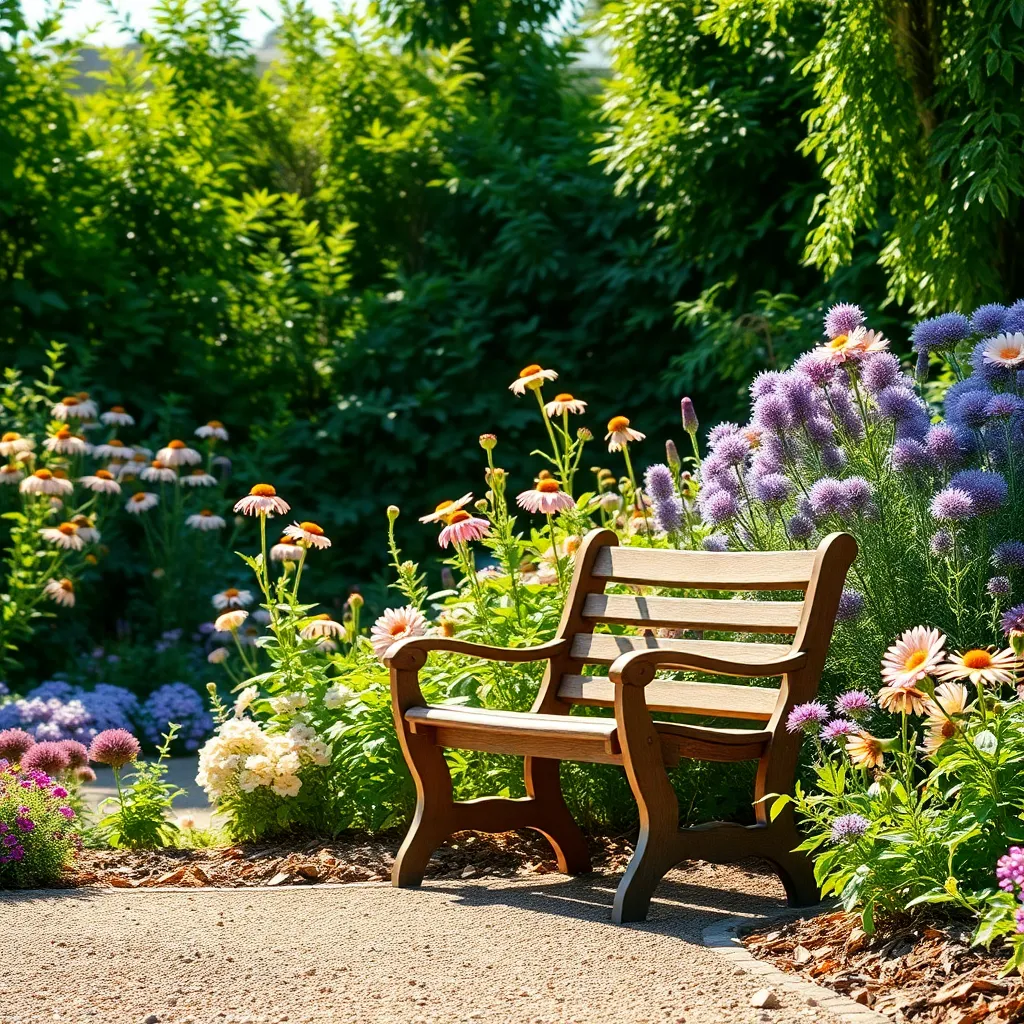
Perennials are a fantastic choice for gardeners seeking longevity in their flower beds. These plants return year after year, providing a dependable backbone to your garden’s design.
To successfully incorporate perennials, start by selecting varieties that are well-suited to your climate and soil type. A well-drained soil enriched with organic matter, such as compost, will support healthy perennial growth.
Consider planting perennials like daylilies, coneflowers, or hostas, which are known for their resilience and low maintenance. For an advanced touch, mix in native perennials to encourage local wildlife and create a more sustainable garden environment.
Regular watering is essential, especially during the first year, to establish strong root systems. Once established, many perennials are drought-tolerant, reducing your garden’s overall water needs.
Pruning and deadheading are key tasks to maintain perennial health and promote continued blooming. In autumn, cut back perennials to ground level after the first frost to prepare them for the winter months.
Mulching around perennials can help conserve moisture, suppress weeds, and provide winter protection for the roots. Use a natural mulch like shredded bark or straw, applying a layer 2 to 3 inches thick.
Plan for Seasonal Blooms
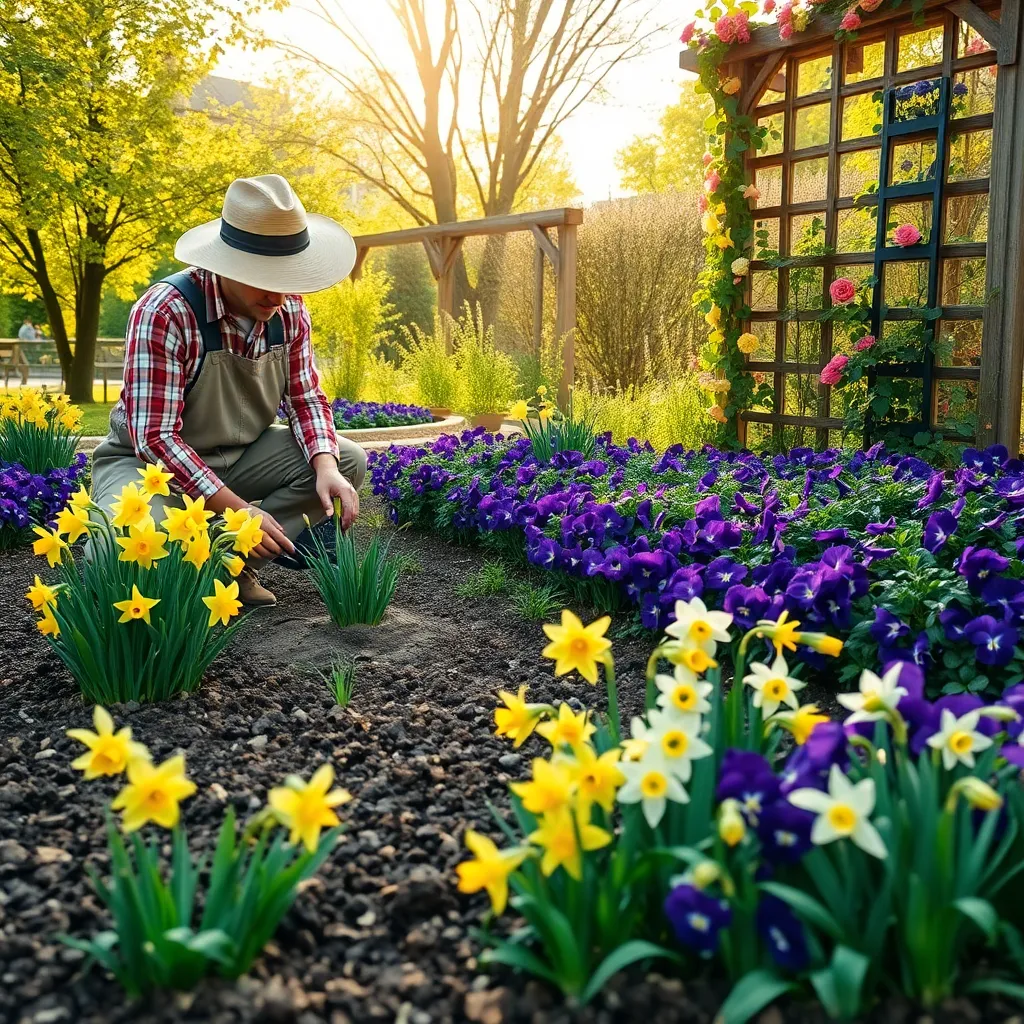
To enjoy a vibrant garden throughout the year, plan your flower selections for seasonal blooms. Begin by choosing a diverse range of plants that bloom in different seasons, ensuring continuous color and interest in your garden.
Consider spring bloomers like tulips and daffodils that burst into color early in the year. These bulbs are best planted in autumn in well-drained soil and require minimal care aside from ensuring they receive ample sunlight.
During summer, focus on flowers such as sunflowers and zinnias to bring warmth and brightness. These thrive in full sun and benefit from regular watering, but be careful not to over-water as this can lead to root rot.
As autumn approaches, incorporate chrysanthemums and asters into your garden for a stunning display of late-season color. These plants prefer cooler temperatures and should be deadheaded regularly to prolong their blooming period.
For winter interest, consider evergreens and plants with distinctive bark or berries, like holly or winter jasmine. While flowering might be limited, these plants can provide structure and texture to your garden during the colder months.
Advanced gardeners can experiment with layering plants, ensuring taller plants do not overshadow shorter ones that require full sun. This technique maximizes your garden space and creates an attractive, layered effect.
By planning strategically and choosing a variety of plants, you can create a garden that offers beauty and enjoyment throughout the entire year. Use this approach to not only enhance your garden’s aesthetic appeal but also to support local pollinators by providing them with a continuous source of nectar and habitat.
Use Mulch to Retain Moisture
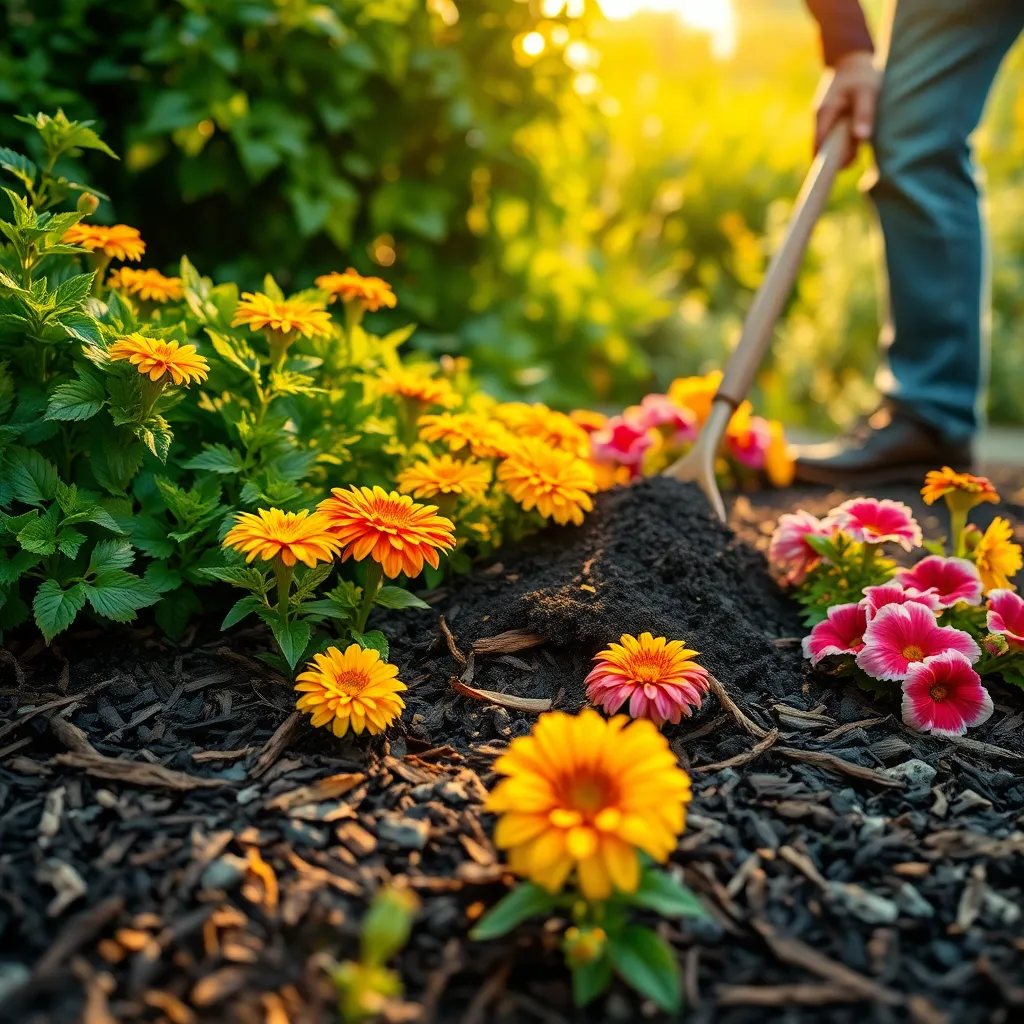
Mulching is an excellent way to retain moisture in your flower garden, reducing the need for frequent watering. By applying a layer of mulch about two to four inches thick, you help to insulate the soil, keeping it cooler and minimizing water evaporation.
Consider using organic materials like shredded bark, straw, or cocoa hulls for your mulch. These materials not only conserve moisture but also improve soil quality as they decompose, enriching your garden with nutrients.
For beginners, applying mulch is simple—just spread it evenly around your plants, leaving a small gap around the stems to prevent rot. Advanced gardeners can experiment with different mulch types to see which best suits their specific plants and soil conditions.
In addition to moisture retention, mulch helps suppress weeds, making garden maintenance easier. Choose mulch that complements your garden’s aesthetic, as it can also enhance the visual appeal of your flower beds.
Conclusion: Growing Success with These Plants
In exploring ‘Easy Flower Garden Design Ideas,’ we’ve unearthed five essential relationship-building concepts: the art of balanced communication, nurturing growth through shared experiences, embracing diversity to enrich partnerships, cultivating patience and understanding, and the transformative power of regular maintenance and care. These ideas mirror the wisdom of tending to a garden, offering a rich metaphor for cultivating thriving relationships.
As your next actionable step, choose one relationship concept that resonates with you today and begin integrating it into your daily interactions. Whether it’s dedicating time for open dialogue or planning a shared activity, small actions can lead to significant growth.
To continue reaping the benefits of these insights, be sure to save or bookmark this article. By doing so, you’ll have a ready reference to revisit whenever you need a relationship boost or a gentle reminder of these nurturing principles.
Remember, a flourishing relationship, much like a well-tended garden, requires ongoing effort and attention. By committing to these foundational concepts, you’re setting the stage for enduring happiness and connection. Here’s to your blossoming journey towards relationship success!

